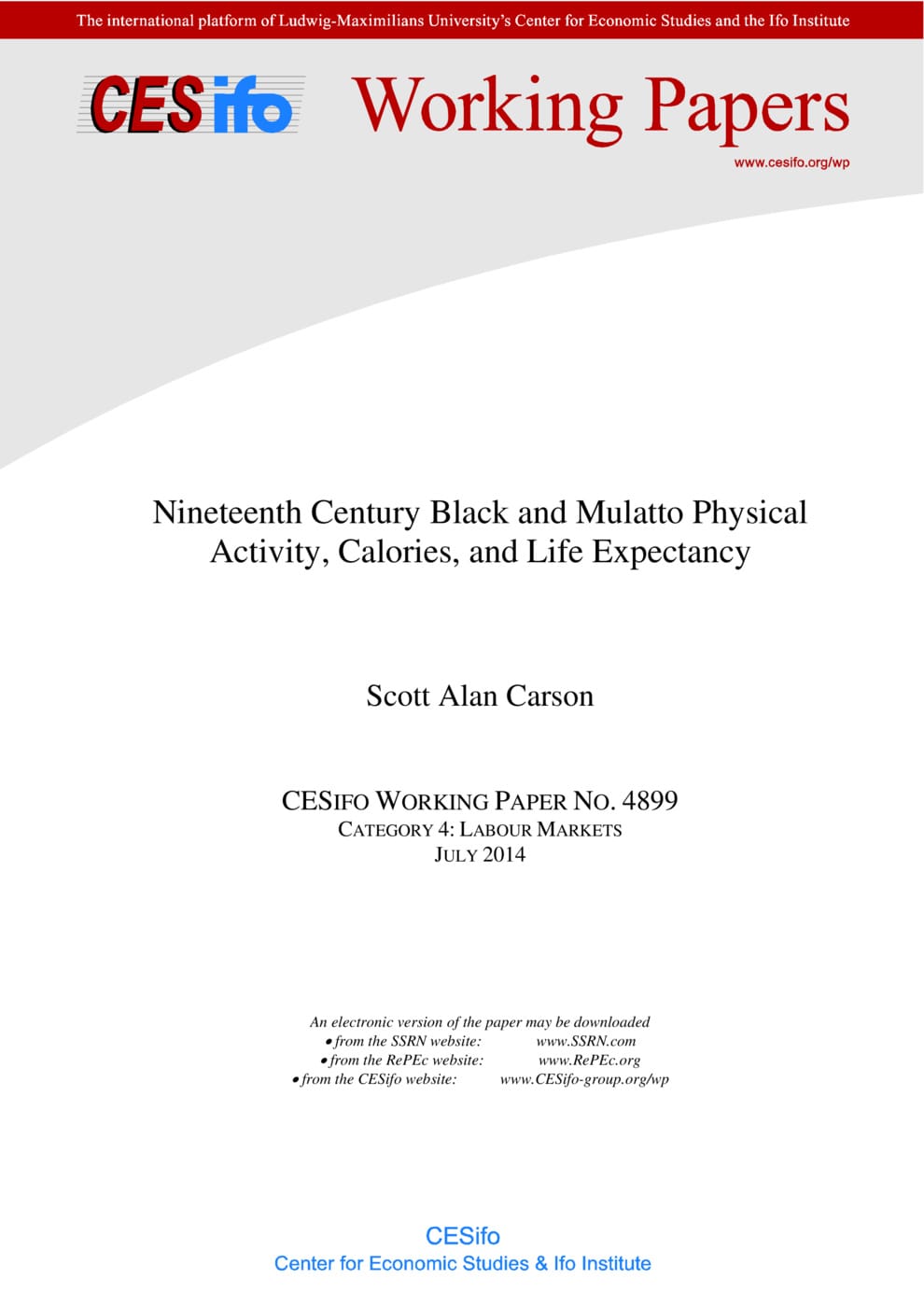Nineteenth Century Black and Mulatto Physical Activity, Calories, and Life Expectancy
CESifo, Munich, 2014
CESifo Working Paper No. 4899

Using data from late 19th and early 20th century US prisons, this study considers how black and mulatto basal metabolic rates and calories varied with economic development. During the 19th century, black physical activity and net nutrition declined during the late 19th and early 20th centuries across their BMR and calorie distributions, and increasing black life expectancy was not likely due to improved nutrition. Physically active farmers had greater BMRs and received more calories per day than workers in other occupations. Black diets, nutrition, and calories varied by residence, and rural blacks in the Deep South consumed the most calories per day, while their Northeastern urban counterparts consumed the least. Policy implications are that public sanitation facilities are of greater import than nutrition during economic development.
Labour Markets
Empirical and Theoretical Methods